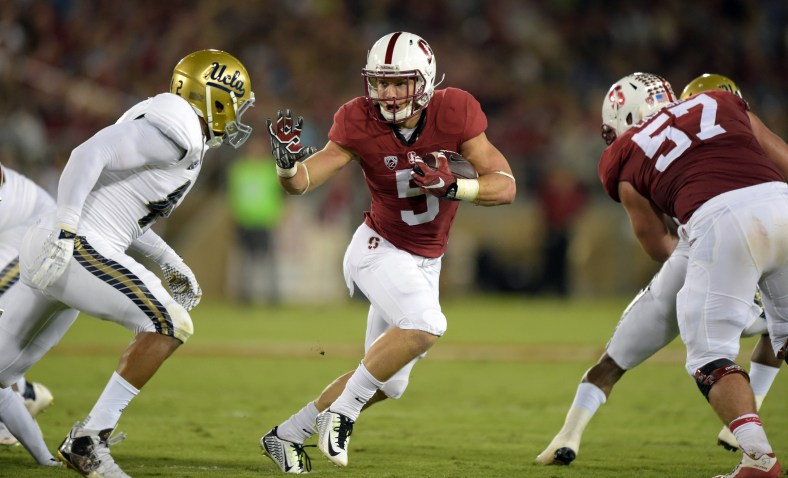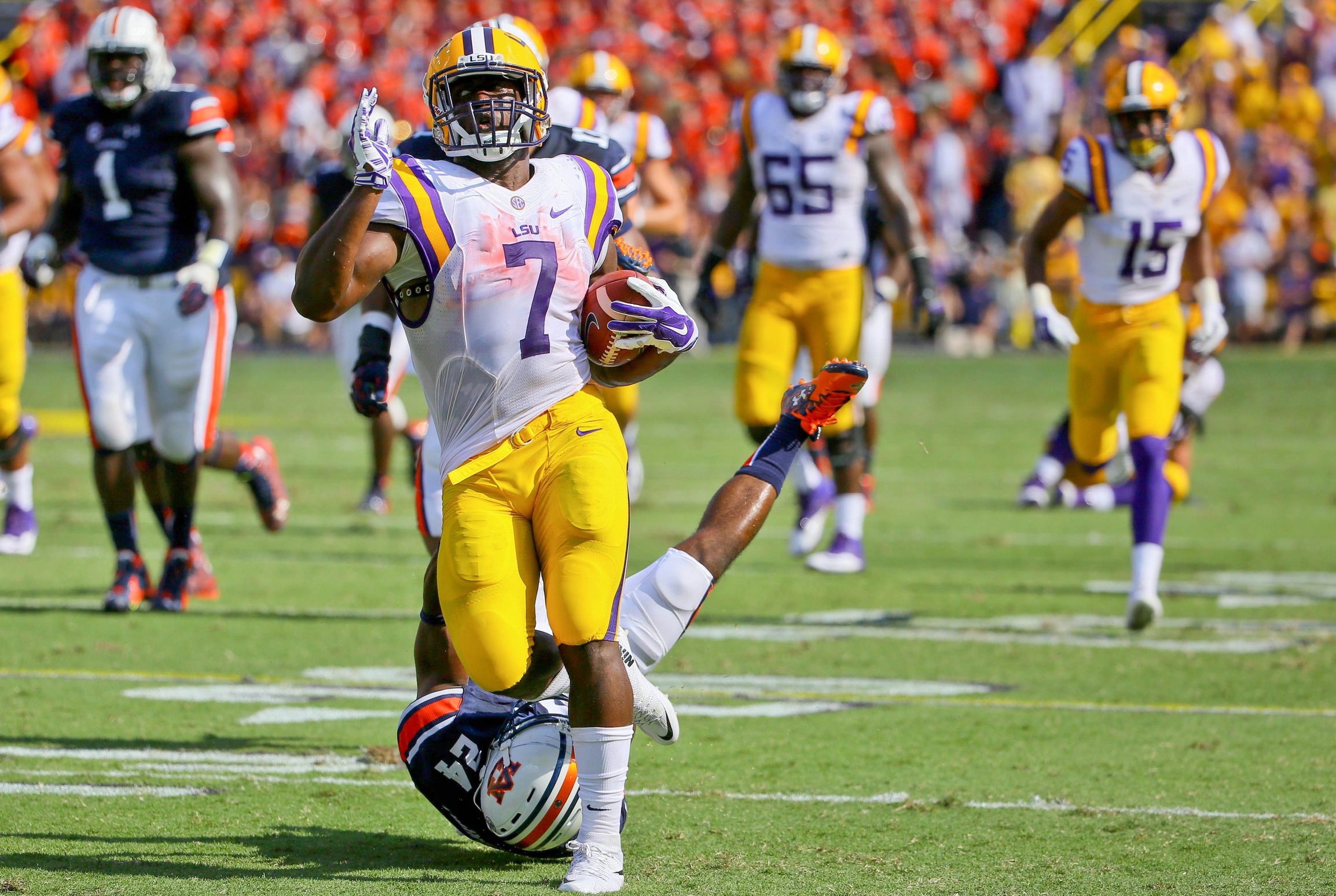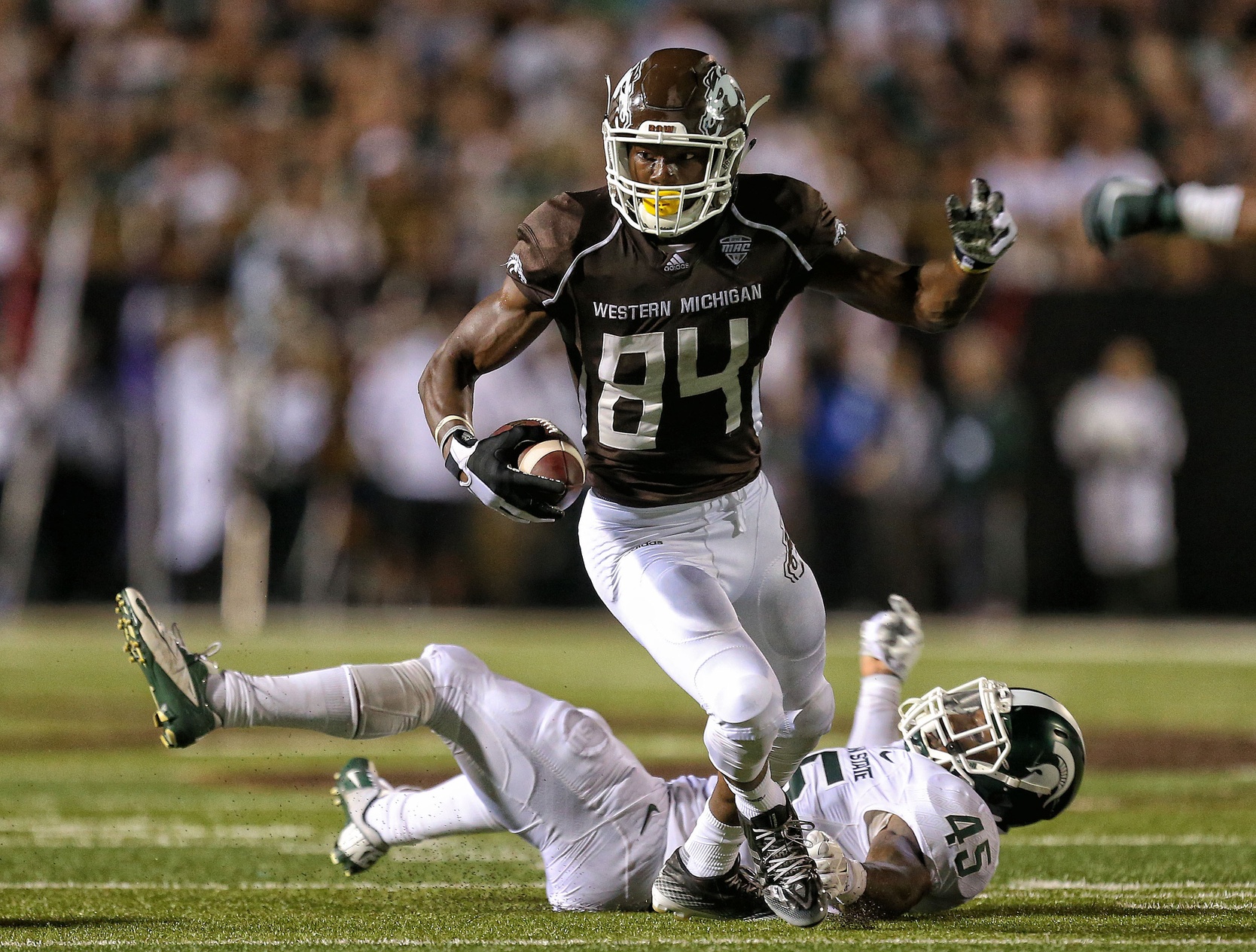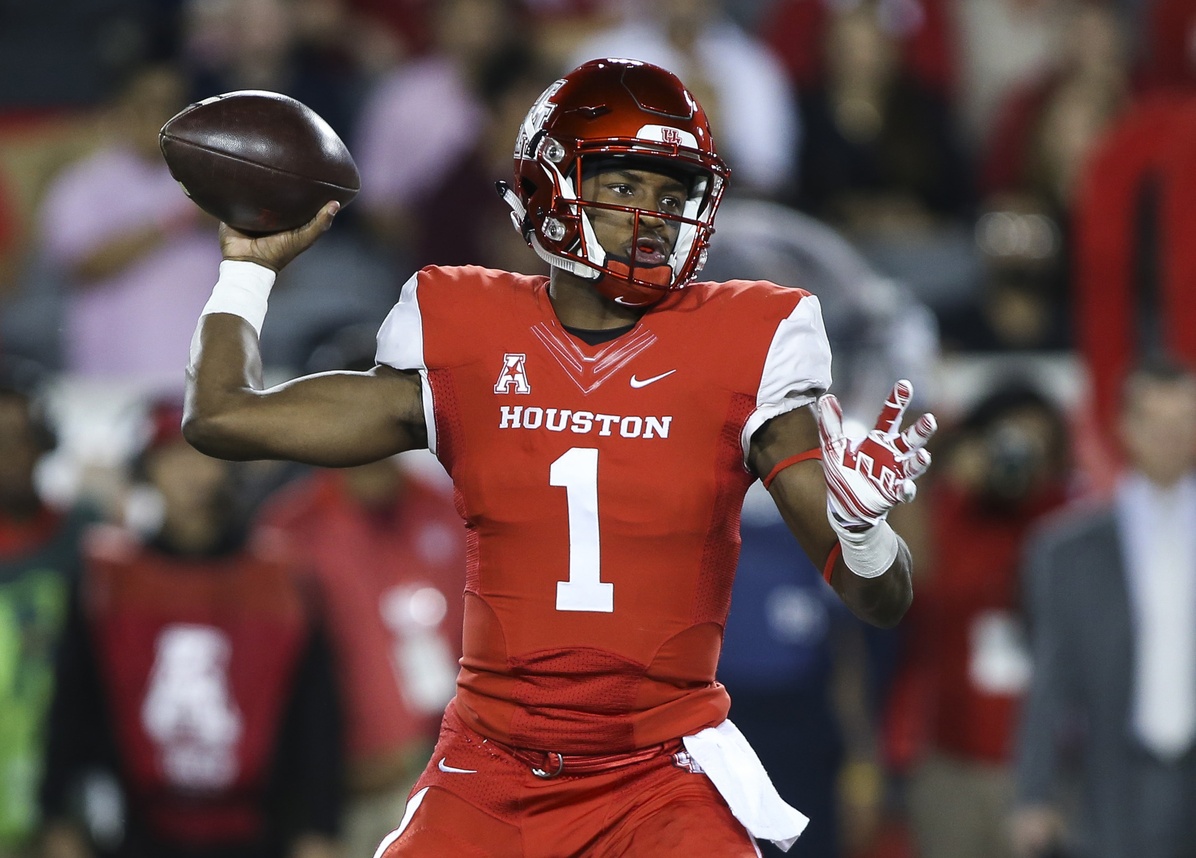
The upcoming college football season should provide plenty of excitement, thanks to a tremendous crop of offensive stars.
You know most of them, because they were also the top stars from last year on many counts. Two of the top three Heisman finalists are back for another go-round, along with a terrific crop of running backs, receivers and quarterbacks.
These are the most dangerous offensive players for the upcoming college football season.
1. Deshaun Watson, quarterback, Clemson
Opposing defenses have a hard time game planning to slow down Clemson’s high-octane offense, mostly because of Watson’s multi-dimensional skill set. Even the mighty Alabama Crimson Tide couldn’t keep him contained during the National Championship Game this past winter.
Last season, which was Watson’s first full campaign as a starter, he combined for 5,214 yards and 47 touchdowns.
The scary part? Clemson’s offense should be even more potent at scoring the ball this year after working hard all offseason on red-zone scoring (more on that here).
Watson ranked third in Heisman voting after the 2015 season, and he is clearly one of the favorites to win the coveted award this year. He’s the most dangerous offensive weapon in college football and is leading a team that has a chance to finish what it started after falling just short with the loss to ‘Bama.
2. Christian McCaffrey, running back, Stanford
No offense to Leonard Fournette, but McCaffrey is the most dangerous non-quarterback in the nation heading into the 2016 season.
 .
.
In addition to his outstanding open-field rushing abilities, McCaffrey is a brilliant receiver who is the main source of offensive firepower for the Cardinal. Last year he caught 45 passes for 645 yards and five touchdowns in addition to rushing for 2,019 yards and eight touchdowns.
Making people miss is his specialty, and he does it often. A sleek runner who has the ability to change direction with ease, he should be a stud at the next level as well.
3. Leonard Fournette, running back, LSU

Raw, unadulterated power is the name of the game when discussing what Fournette brings to the table for the Tigers.
A running back with outstanding size (6-foot-1, 225 pounds), he can run over, around and through even the most stout defenders college football has to offer. His feats of strength were consistently on display last year, including an instance where he literally ran through a defender who got in his way (watch here).
Head coach Les Miles asked Fournette to slim down a tad this offseason so he could get a bit quicker, and the running back didn’t disappoint, losing five pounds.
“His desire to have speed, strength and the combination of the two is the advantage for the elite back, and he’s right there where he needs to be,” Miles said of Fournette at SEC Media Days, per SECCountry.com.
After a ridiculous start to the 2015 season, Fournette cooled off significantly after being humbled against Alabama in the first weekend of November. Still, the power back managed to scrounge together 1,953 rushing yards and 22 touchdowns, adding another touchdown through the air.
If he can avoid a letdown this year like the one he suffered in 2015, then Fournette should eclipse the 2,000-yard mark on the ground in 2016. And if he can show off some hands in the passing game, he’d be even more dangerous.
4. Dalvin Cook, running back, Florida State
There are many who believe Cook is just as hot an NFL prospect as Fournette.
https://twitter.com/CharlesRobinson/status/761217732855619584
And if you ask him, he’s the best running back in college football.
Indeed, Cook might end up being a better NFL player than Fournette, based on his well-rounded game and the fact he can stay on the field and be productive in obvious passing situations.
Battling through injuries last year, the Florida State stud still put up tremendous numbers as a featured back in Jimbo Fisher’s offense. He rushed for 1,691 yards and 19 touchdowns, adding another 244 yards and a touchdown through the air.
Florida State would be smart to get the ball into Cook’s hands more often on screen passes and slant patterns out of the backfield so he can contribute more in this capacity for the 2016 season.
5. Baker Mayfield, quarterback, Oklahoma
Since transferring from Texas Tech to Oklahoma, Mayfield has done nothing but impress. What he did last year for the Sooners went largely under the national radar, but he’ll be one of the most talked-about quarterbacks this upcoming season.
 Though not quite on Watson’s level, Mayfield did show off a flair for the dramatic while leading Oklahoma to a 11-2 record. He combined for 4,105 yards and 43 touchdowns while throwing just seven interceptions.
Though not quite on Watson’s level, Mayfield did show off a flair for the dramatic while leading Oklahoma to a 11-2 record. He combined for 4,105 yards and 43 touchdowns while throwing just seven interceptions.
One of the things that Mayfield has going for him this year as it pertains to potentially making his way into the Heisman Trophy race is Oklahoma’s brutal schedule. The team will open against Houston and then will host Ohio State two weeks later.
Head coach Bob Stoops are excited about the opportunity to showcase the program on a bigger stage this season, which could lead to more potential signature moments for his quarterback.
“It’s exciting,” Stoops said in an exclusive interview with Campus Insiders. “Houston is such a great football team coming off a 14-point win over Florida State in their bowl game. Ohio State coming to us as well. Major challenge. Two top ten teams, or 11-12, I don’t know where everybody’s ranked but in the end, you know, it’s a major challenge. It’s going to be tough.”
If Mayfield performs well and the Sooners win those games, he’ll be an early Heisman favorite.
6. Royce Freeman, running back, Oregon
While expectations for Oregon as a program must be tempered for the 2016 season, don’t fall asleep on Freeman as potentially the best running back in college football.
It’s really quite something that Freeman has somehow remained outside the national spotlight until this year. He’s displayed outstanding vision and a knack for making people miss.
Oregon RB Royce Freeman forced 89 missed tackles last year, second most in college football. 👀 pic.twitter.com/9ImzyXa97H
— PFF College (@PFF_College) August 2, 2016
Making a huge impact for the Ducks since his rookie campaign, he’s rushed for 3,203 yards with 35 touchdowns the past two years.
Though not exactly the most explosive athlete out there, Freeman knows how to wait for his offensive line to make holes and hits them hard when they present. He’s also shown an ability to create big gains on short passes, something we’ll likely see more of in his junior campaign.
7. Nick Chubb, running back, Georgia
Before suffering a season-ending knee injury, Chubb was almost as dynamic for the Bulldogs as Fournette was for LSU at the time.
The week before tearing three ligaments in his knee, he tied Herschel Walker’s record after rushing for at least 100 yards in 13 straight games (watch him tie the record with an incredible 83-yard touchdown against Alabama).
Playing in just six games for Georgia, Chubb rushed for 747 yards, averaging an eye-popping 8.1 yards per carry, and seven touchdowns.
Offensive coordinator Jim Chaney is excited about what he’s seen from Chubb this summer as he returns to action.
“He’s practicing hard like everybody else is, and I see Nick Chubb being the player that he’s been before, and will continue to do so,” Chaney said, via DawgNation.com. “I mean he’s a downhill running son of a gun, so let’s hand him the ball and see what he can get done.”
If he can stay healthy, Chubb has a chance to do something special for the Bulldogs this year.
8. Corey Davis, wide receiver, Western Michigan
 Now Davis is probably the first, and only, name on this list you won’t recognize unless you’re a die-hard fan of the Western Michigan Broncos.
Now Davis is probably the first, and only, name on this list you won’t recognize unless you’re a die-hard fan of the Western Michigan Broncos.
Despite playing for a small school that’s best known for having one of the nation’s largest aviation programs, Davis is a guy NFL scouts have their eye on as a potential hidden gem.
The past three seasons, he has put together highly productive campaigns for the Broncos, improving every year. In total, Davis has tallied 234 catches for 3,778 yards and 33 touchdowns. Standing at 6-foot-3 and weighing around 220 pounds, he has the frame and athleticism to make plays all over the field.
“He’s a freak,” WMU quarterback Zach Terrell said of Davis, per Adam Rittenberg of ESPN.com. “Always has been. But you can definitely see he has gotten a lot stronger. That’s going to be scary for a lot of teams.”
Keep an eye out for this freak to do some big-time damage this upcoming season.
9. JuJu Smith-Schuster, wide receiver, USC
A big-play threat who can score on long bombs and short passes alike, Smith-Schuster was on fire to open the season for the Trojans in 2015. In his first nine games, he totaled at least 100 yards in seven of them before an ankle injury slowed him down.
Utilizing a well-rounded game that includes a nasty attitude (and that’s a good thing), Schuster is highly productive from snap to snap.
.@USC_Athletics' JuJu Smith-Schuster averaged 3.39 yards per route run in 2015, highest among returning Power-5 WRs. pic.twitter.com/i8t83hSeoF
— PFF College (@PFF_College) July 23, 2016
He caught 89 passes for 1,454 yards and 10 touchdowns playing with a weak-armed Cody Kessler last year. If Max Browne can emerge as a reliable leader and takes care of the football for the Trojans, then Smith-Schuster’s numbers should go up this year.
10. Greg Ward Jr., quarterback, Houston

Keep an eye out for Ward Jr. as a dark horse Heisman candidate. This dual-threat quarterback is one of the most tantalizing players to watch from week to week, and he literally does it all for Houston sometimes.
A dynamic runner, Ward Jr. rushed for 1,114 yards last year with an astounding 21 touchdowns on the ground. Add in his 2,827 passing yards with 17 touchdowns and you’re looking at one of the highest-scoring players in college football.
The only other quarterback to match Ward Jr.’s combination of 1,000-plus rushing yards and 2,000-plus passing yards was Clemson’s Watson.
Houston went 13-1 last year, winning the American Athletic Conference, and thanks to Ward Jr., the program managed to shock Florida State in the Peach Bowl, capping off a magnificent campaign. If the quarterback can match or better his 2015 effort, he’ll be in the Heisman conversation.
As an aside, it will be interesting to see how Ward Jr. transitions into the NFL after his senior season is concluded this winter. The NFL isn’t usually kind to diminutive running quarterbacks, so if he does want to further his football career a position change is almost certainly in order.